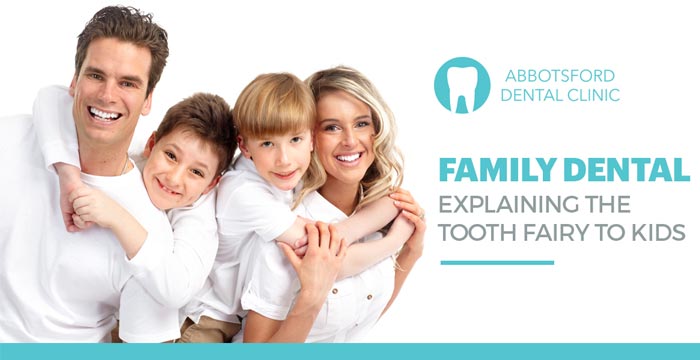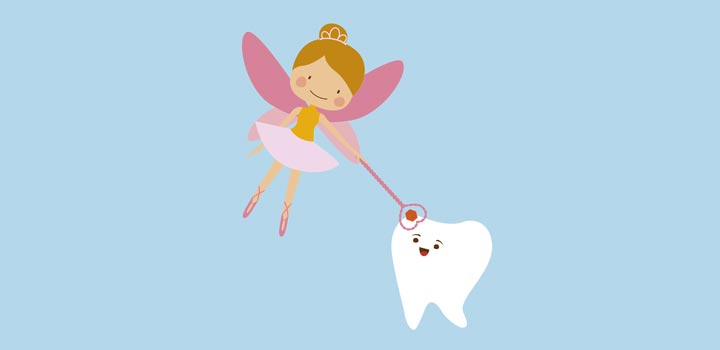It’s a fact of life: we love to see our kids feel better or relieved from what we give, tell or do to them – even if it’s just a myth like the tooth fairy.
This fairy tale in particular makes kids excited about losing their baby teeth. The anticipation of a reward upon losing a tooth normally makes your child enthusiastic about what would otherwise be undesirable: losing teeth. So you’ll want to tell them about the tooth fairy to relieve their fear of losing teeth and see them joyous.
But this, as we know all too well, involves stretching the truth…
Yet kids become inquisitive as they grow, and won’t always remain as passive listeners. At some point, they start asking questions. Parents find some of these questions truly dreaded, because how you respond may affect the kid in substantial ways.
You can expect your kid to hit you with more of these dreaded questions when they start attending school. They’ll be meeting up with their peers. Soon they start questioning the whole thing about Santa Claus, or the Easter Bunny, and worst of all, the Tooth Fairy.
Around this age, kids are quickly losing their naivety. Most of the explanations you give them may be met with a quick “why” rejoinder. And suppose his or her peers say anything to the contrary, it would be upsetting for the kid to bring themselves to imagine the possibility of you “lying” to them. Because for every kid, mum (or dad) is always right and couldn’t lie.
You don’t want to put your child in that position. So, how exactly should you approach the tooth fairy tale to your child?
This will depend on:
- The age of the child, and;
- Whether the child asked the question or not
Considering the age factor
How you approach the tooth theory may have to be different for a 10-year-old as compared to a six-year-old child.
At age six, your kid is just starting to lose the baby teeth. Your main objective is to inspire courage in him or her so that the whole experience of naturally losing a tooth can be exciting. Children look up to events, and you’ll need to give them reason to.
As it is, the tooth fairy has a historical background in our societies. But your kid doesn’t need all that history. So you’ll want to pick the inspiring part of the tale: a personable mystic figure that comes only in the cover of darkness to reward them for their braveness at letting go of their tooth. That’s a line you would certainly resonate with as a child.
Then there’s the huge love that youngsters have for sweet stories. You don’t want yours to miss out. The tooth fairy time is often a nice little opportunity for you to soothe your kid with a good tale. Explain to the young one about what a fairy is, including how fairies have appeared in various myths. Narrate to your child fairies in various stories have been guides and helpers to children and grownups alike.
Then narrow it down to the tooth fairy. Let your child know how this fairy loves to visit kids in their sleep to reward them for their bravery. Be sure to tell your child the essence of the reward: to help the child grow and to encourage them not be afraid of the changes that come as one grows.
For an older kid…
The story may not always be the same. Chances are that the child is already schooling and is bound to encounter contradicting stories. Chances are that you already introduced them to the tooth fairy, so it won’t be an original topic.
“Is the Tooth Fairy real?”
What if he or she asks the question? This is the moment of truth. Many parents won’t find it easy to face it up and admit they’ve been lying to the kid all along. But you have to do it nonetheless. So here’s some guideline.
Consider the context and nature of the question
Be sure to get what your child is really asking. Your child might just be looking for a reason to continue believing in the tooth fairy. They may look excited and interested in the essence of the tooth fairy. Suppose that is the case then you have a breather. Simply stick to the question at hand. Explain to your child why it is necessary for him or her to get the reward. Make it interesting as we mentioned earlier.
If the child is looking for the truth however, you cannot sustain the lie; you’d have to “clear your name”. Sit him or her down, then use the kindest words possible to explain to them why it was necessary to tell them the myth earlier (to inspire them). The kid may be momentarily upset, but will be thankful; for the honest response just as immediately.
It should be easy to tell whether or not your kid is ready for the truth. A kid who says, “Mom, is the tooth fairy real?” is looking for the truth. You must give it to them!
Otherwise you could ask leading questions like “What do you think?” or “Why do you ask?” to find out if they may still be looking to keep holding on to the story.
Whatever the case, the child’s age should be your main guiding indicator. Telling a toddler in preschool that the tooth fairy doesn’t exist wouldn’t be a good idea. There may be social strain when the kid starts to share the same with his or her peers. However, letting your kid hold on to the myth as true in his middle school would make them appear ignorant before his peers. So, consider the age and determine the right age to give your child the truth.
Anticipate your child’s response and prepare for it
Not all kids will feel bad to know you that intentionally misled them earlier. Some will find it quite exciting and laugh upon learning that their parent is actually the tooth fairy. As a child it may appear quite comical that an adult would sneak in and “steal” your tooth while you are asleep leaving them some cash.
So, understand your child. If s/he is a fragile type, be gentle and pick your words carefully. If the kid is fun loving, then it should be easier to introduce the topic and lace it with fun.
The Abbotsford Dental Clinic service provides a wide range of children dental services including relief of pain, restorative and preventative services, and maintenance of dental health.
 201 Nicholson Street Abbotsford VIC 3067
201 Nicholson Street Abbotsford VIC 3067

